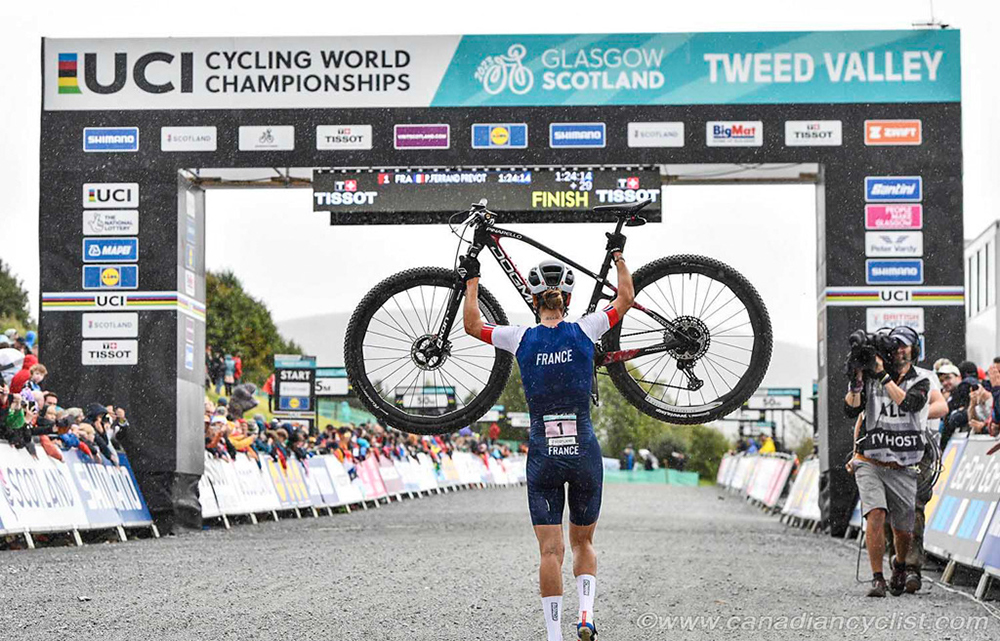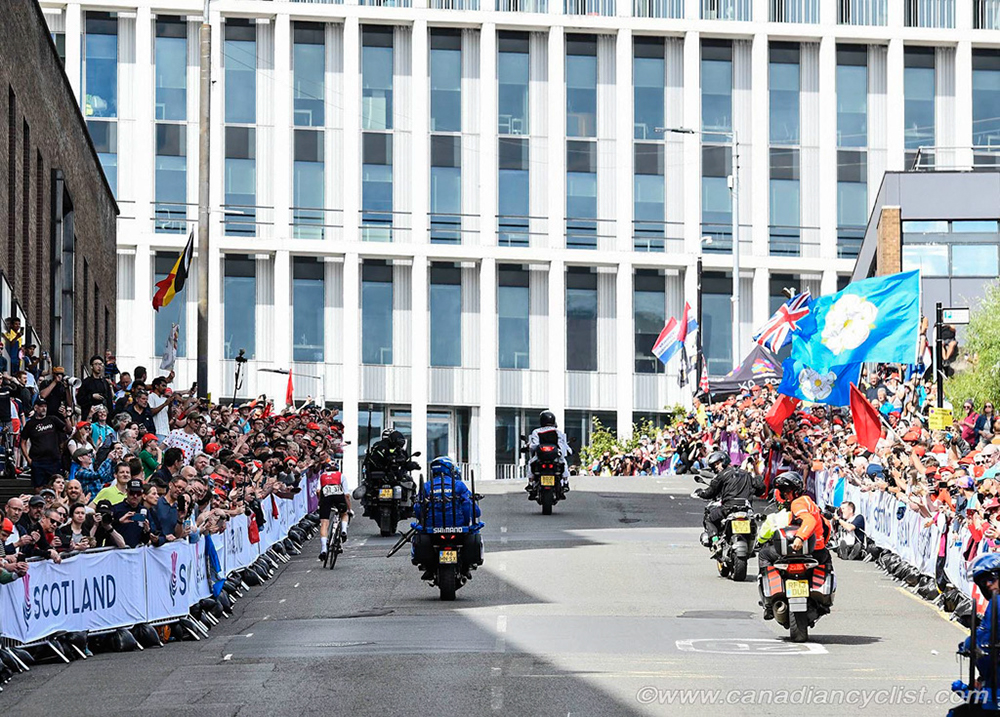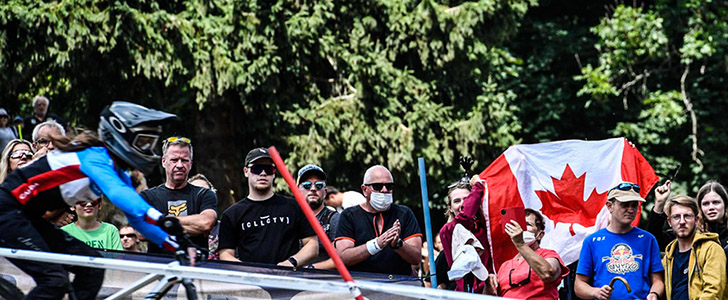August 23/23 10:37 am - Opinion: The Multi-Worlds - Was It Worth It?
Posted by Editoress on 08/23/23
It's been a week since the conclusion of the Super / Mega / Whatever-you-call-it Worlds in Scotland, which drew together 13 different disciplines of cycling for one world championships stretched across 12 days and much of southern/central Scotland. Organizers deserve high praise for pulling off this logistical nightmare, with most races going off smoothly.
This was the first time in history that a combined world championships like this has been attempted, with the next one planned for 2027 in the Haute-Savoie region of France. Coming into it, there were a lot of concerns from national teams, media, officials and staff. Remember, for many national programs, support staff (such as mechanics, soigneurs, physios, etc.) are spread across multiple disciplines, so how would they manage when there were demands from all these disciplines at the same time at different venues? For media, how would it be possible to cover everything, when there were multiple events going on simultaneously? It turned, that it often wasn't possible.
Here are my takeaways.
Everything, Everywhere, All At Once
With apologies to the Academy Award winning movie, that is what it often felt like over the two weeks. The world championships is a special event, with the best rider on the day recognized at the end of each event. At a regular Worlds, there is only one event at a time, so the focus can be on that event. Here, it felt like we were in a multi-channel universe, and if everything is special, then nothing is special. The track, for example, had 70 podiums and, given the limited time and space, podiums were going on during racing AND in a totally separate building. The few times I left the racing action to go to a podium, there were maybe a dozen people in attendance. This is supposed to be the culmination of an athlete's efforts, but it certainly didn't get the respect it deserved.
Similarly, if you were at the mountain bike venue covering events there, you (and all the spectators there) had no involvement in the time trials, or indoor cycling, or BMX competitions going on in other locations at the same time. Everything was siloed, which was a far cry from the promised festival atmosphere that was supposed to bring all of cycling together.

There was also a comparison to the Olympics, and how this was like a Cycling Olympics ... except it wasn't. The Olympics (and I've been to five of them), is an exhausting, non-stop event, but there is no overlap of cycling events; you can go to the Road events, then the Track, then BMX and then Mountain Bike. Each is the complete focus while it is taking place.
For athletes, there is also the unique experience at the Olympics of the Athlete Village, where they get to mingle and interact with athletes from other nations and other sports; many Olympians I have spoken with say that this is one of the most important parts of the Olympic experience. At these recent Worlds, every discipline was separated (or, as I called it previously, siloed) based on the geographic location of the venue where their competition was taking place. Even the Downhill and Cross-country mountain bikers didn't mingle, since their venues were over 250 kilometres apart.

With so much going on, only a few marquee events received proper coverage (such as the Elite men's road race), with many competitions receiving less coverage than usual. If most of the media was at the men's road race (and they were), how much coverage or interest do you think the Track, Para Track or Mountain Bike Marathon received on August 6th?
While I have been busy pointing out the flaws of this format, there is one specific positive that I want to highlight - the integration of able and para cyclists on the track. This was a complete integration of the two disciplines, and it provided a larger than usual audience to the para athletes, showcasing their capabilities, and they responded with some great racing and multiple world records. It did require eight days and there were some logistical problems with fitting all the athletes and staff in the infield, but it proved to be the one segment of these Worlds that met the goal of bringing together cyclists from different disciplines, and should be considered for the future.

Overall, in my opinion, this falls under the 'nice idea, but didn't meet expectations' conclusion. While there are certain synergies that should be explored further, such as combined para and able Track or Road events; all BMX disciplines together; trying to put everything together led to less, rather than more, exposure for many disciplines.
| Return to Canadian Cyclist homepage | Back to Top |




